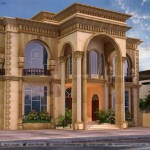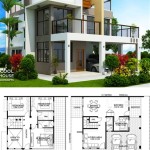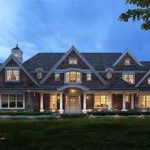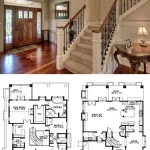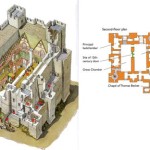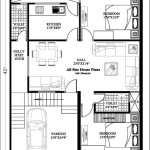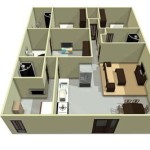Essential Aspects of Passive House Plans
Passive House is a building standard that focuses on energy efficiency and comfort. Passive House plans are designed to minimize energy consumption and maximize occupant comfort, resulting in buildings that are highly energy-efficient, comfortable, and affordable to operate.
Five Key Principles of Passive House Design
The Passive House concept is based on five key principles:
- Continuous Insulation: The building envelope (walls, roof, and floor) is insulated continuously without thermal bridges.
- Airtightness: The building envelope is made airtight to prevent uncontrolled air leakage.
- High-Performance Windows and Doors: Windows and doors are designed to minimize heat loss and maximize solar gain.
- Thermal Mass: The building envelope includes materials that store heat, such as concrete or masonry, to regulate indoor temperatures.
- Mechanical Ventilation with Heat Recovery: A mechanical ventilation system provides fresh air while recovering heat from the exhaust air.
Benefits of Passive House Construction
Passive House construction offers numerous benefits, including:
- Reduced Energy Consumption: Passive House buildings typically consume up to 90% less energy for heating and cooling compared to conventional buildings.
- Improved Comfort: Passive House buildings provide a comfortable indoor environment with consistent temperatures, fresh air, and reduced noise.
- Lower Operating Costs: The low energy consumption of Passive House buildings results in lower utility bills.
- Increased Durability: The durable construction techniques used in Passive House buildings extend their lifespan and reduce maintenance costs.
- Environmental Sustainability: Passive House buildings significantly reduce greenhouse gas emissions, contributing to environmental protection.
Design Considerations for Passive House Plans
When designing Passive House plans, several key considerations must be taken into account:
- Site Orientation: The building should be oriented to maximize solar gain and minimize wind exposure.
- Building Shape: Compact building forms reduce the surface area exposed to the elements, improving energy efficiency.
- Shading Devices: Shading devices, such as overhangs and blinds, can help control solar gain and reduce overheating.
- Building Materials: Materials with high insulation values, such as cellulose insulation or structural insulated panels (SIPs), are typically used in Passive House construction.
Conclusion
Passive House plans offer a path towards energy-efficient, comfortable, and sustainable buildings. By incorporating the principles of Passive House design, architects and builders can create buildings that significantly reduce energy consumption, improve occupant comfort, and minimize environmental impact.

Passive House Design Fontan Architecture

Plans Passive Design Solutions Custom Home Builds Renovations

Passive House Plans Ekobuilt

Heatspring Free Floor Plan 10 Ways Passive House Design Is Diffe Than Normal Home

Passivehaus Or Passive House Signature Sustaility

Passive Design Green Home Technology Center

An Introduction To The Flatrock Passive House Greenbuildingadvisor

Passive House Design Principles Briburn Architecture
What Does A Passive House Cost To Build Leanhaus

Bozeman Passive House Love Sc Sustainable Architecture And Design In Montana Teton Valley Idaho

